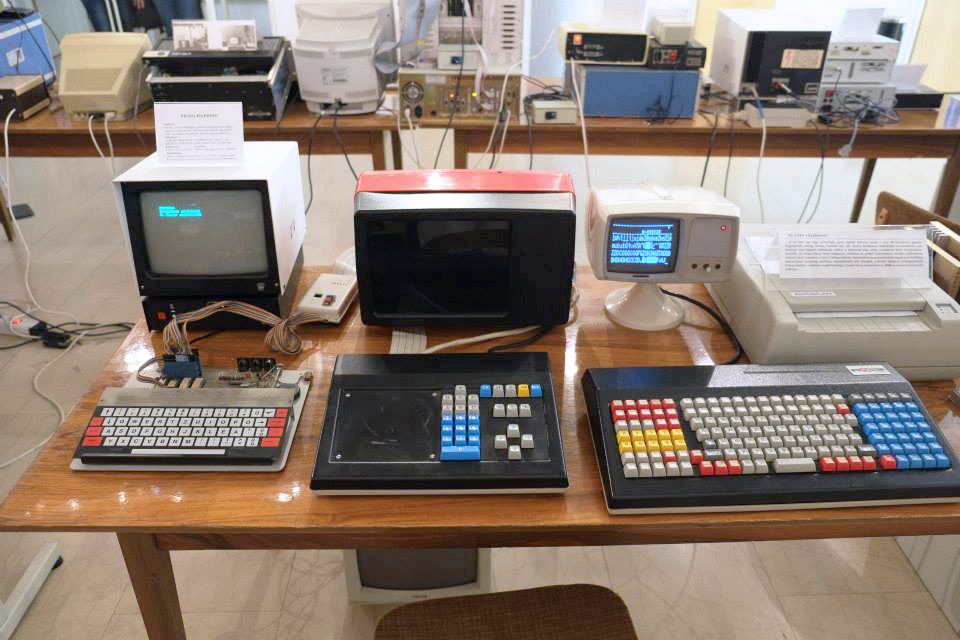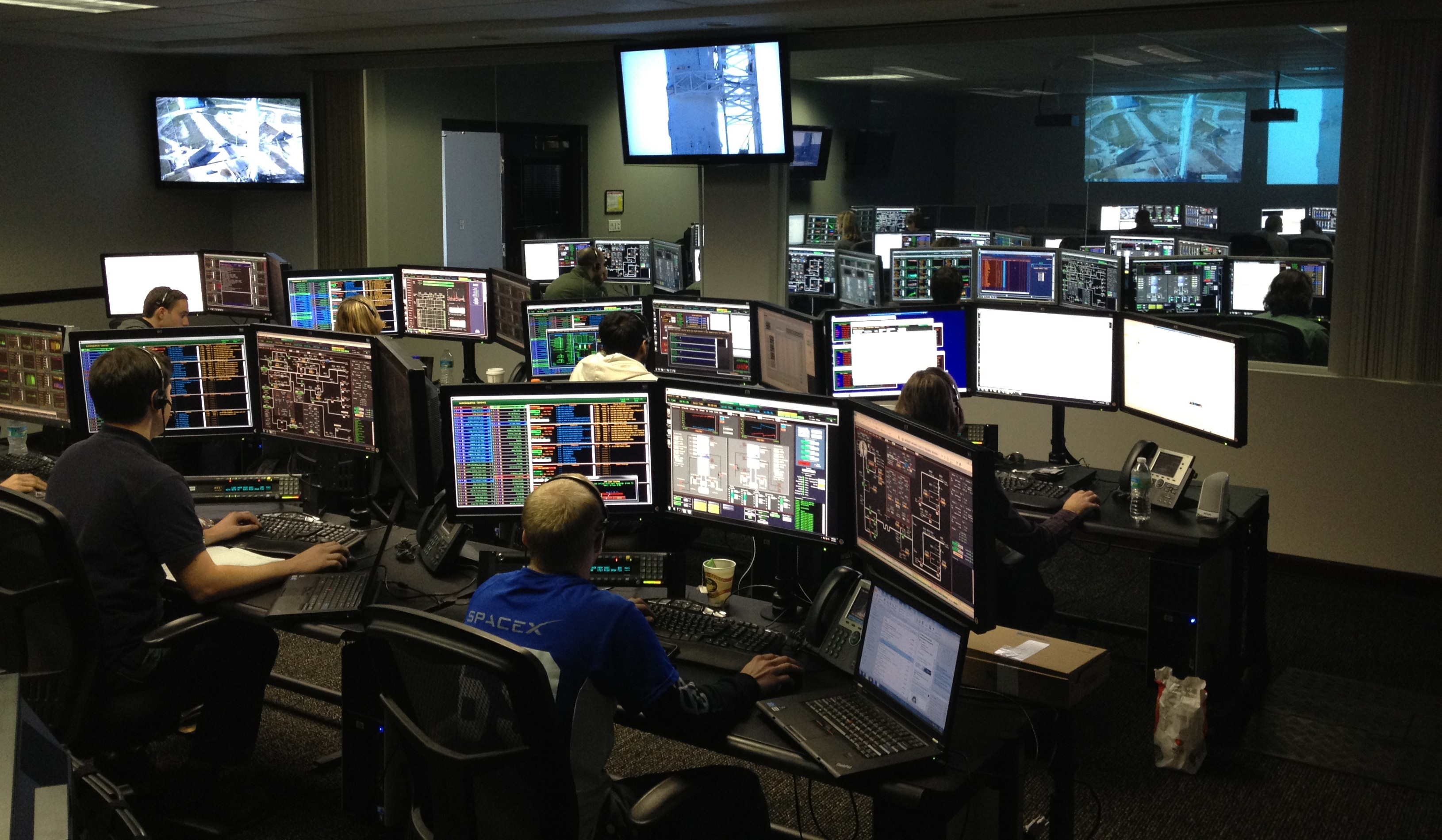Our History
The Research Institute for Computer Science and Control, Hungarian Academy of Sciences (MTA SZTAKI), was established in 1973 by the merger of two research institutions: the Centre of Computer Technics (SzK) and the Research Institute for Automation (AKI). In a short time, the new institute has become one of the primary national institutions for technical research, development and computer application. Both predecessors have grown up on the basis of their own research staff, many of them pioneers in their own professional areas in Hungary. The institutions’ history goes back to the fifties.
The predecessors
The history of MTA SZK (its founders, leading researchers, scientific tasks)
The predecessor of the Centre of Computer Technics created in 1960 was the Research Group for Cybernetics (KKCS) formed only just four years before. Its establishment, achievements and research staff are of historic importance because this independent research organisation represents the birth of the Hungarian informatics and computing. It was KKCS that, by understanding its principles of operation and recognising its scientific relevance built the first Hungarian computer; they started the first training in computing, thus educating the first local computer experts. In the leadership of the Group were Rezső Tarján, István Aczél and Tamás Frey, relying on the contribution of József Hatvany, Antal Münnich and later Bálint Dömölky, Imre Molnár and their colleagues. The construction of the first Hungarian computer was motivated partly also by the lack of legal acquisition channels. The Group, comprising mainly young, freshly graduated mathematicians and engineers was occupied first with learning, making themselves familiar with the available professional literature from abroad. The mathematicians were developing program packages, sets of numerical algorithms while the technical staff had the task to construct the machine utilising these operational principles. The computer was called M-3. Here we give some of its basic parameters: 30 operations/sec, a magnetic drum external memory with a capacity of 1024 words of a length of 30 bits. It had no operating system, each computational step and memory addressing had to be programmed individually, and the instructions had to be coded in the octal system. The space requirement of the machine was 60 square meters, not counting the air conditioner! While the construction was still going on, a series of lectures was held and papers were written to prepare the first “users”, i.e. the professionals who had to be enabled to formulate their problems to be solved for the mathematicians. It is the merit of KKCS’ pioneering work to disseminate to computer culture in Hungary. By developing the computer further (this meant inter alia the replacement of the not failure proof components by new, Hungarian products) the way was paved to the various practical applications. KKCS contributed to the elaboration of the static plans of the new Elisabeth Bridge in Budapest, the solution of various problems in chemistry and physics and even the first application in economics was soon prepared. The intellectual leader of the Group became Rezső Tarján, the most significant personality in the initial period of the Hungarian cybernetics, computer technology and science. He was among the first to recognise the importance of the new discipline and soon he became the leading authority in this area. But his work was received with mistrust by the political leadership, so about 1960 he felt forced to resign from his position.
Shortly later the Group was restructured and renamed: the Centre of Computer Technics (SzK) was established. In the new institution the solution of application problems dominated over the construction of computers. István Aczél, the former head of the team responsible for the economic applications was appointed to the job of the new director. The scientific activity of the Centre was organised around departments covering a great variety of subjects reflecting the various application topics and the complexity of the cybernetics. Besides the mathematical, biological, linguistic and technical issues, the economic applications dominated their activity. They participated in the development of the first industry branch specific models, in the solution of the first linear programming, transportation and economic calculations. In this period, research in IT supported linguistics was very popular, so significant efforts were devoted to the questions of computer-aided translation. The great variety of the subjects dealt with may be demonstrated by referring examples like the automation of transport and manufacturing processes as well as the philosophical and social foundation of cybernetics. In this early period of the evolution of IT in Hungary, the computer science has not yet become a routine technical task, the usage of computers supported mainly finding novel approaches and new analysis methods to the problems to be solved. Therefore, the applications made by SZK were based on research and were not mere services provided. In parallel to this, the early sixties brought some improvement in the number of computers in use. It became evident that both the centre and the profile of the national programme of computer technology had to be adapted to the new structure just being formed and its goals and tasks had to be defined accordingly.
Aczél was a high-calibre manager with good capabilities but his early decease prevented him to implement his visionary plans. The new director from 1963 was Tamás Frey, who worked for KKCS before and who had not only the professional abilities and a broad mathematical culture but was also a very attracting character. Under his leadership the weight of the technical application of mathematical logics increased but SZK’s profile – despite all disputes and controversial endeavours - remained solid: a balance was maintained between research and provision of services. The Centre played an important role in the evolution of computer technology in Hungary. One main reason for that was that many from the new generation realised the high potential in it and therefore, were trying to harness the given academic framework. So, János Kornai, one of the most influencing master of the Hungarian theoretical economics, Ferenc Kiefer, the pioneer of modern Hungarian linguistics and Bálint Dömölki, probably the first Hungarian software engineer and a number of talented engineers worked here, all becoming shortly managers of computer centres in ministries and other professional organisations.
However, the history of the Centre was overshadowed from the beginning by the fact that it was under the supervision of the 3rd Department of Mathematics of the Hungarian Academy of Sciences where most of the otherwise outstanding mathematicians, with the exception of László Kalmár, have not recognised the revolutionary importance of computer science. The internal splits and divergent personal ambitions were an impediment to create the Academy’s own computing base. As a result of the fighting Frey resigned and retreated first to the Budapest Technical University then later the Research Institute for Automation, the other predecessor institution of SZTAKI.
In 1969, János Balázs received the mandate to head the Centre. His main task would have been to make the preparations for the reception of the country’s first modern computer. Indeed, in the meantime even the Academy has realised that computers constitute an indispensable condition for any high quality research work. Efforts were done to acquire a computer from the West, and the selection fell on the type CDC 3300, a machine performing very well for scientific calculations. In 1971 Tibor Vámos was appointed as new director with the mandate to merge the Centre with the Research Institute for Automation. The new computer was installed by him which enabled the Institute to provide world class mathematical computing power, consultancy and cooperation contracts to its clients and users. For some time Mátyás Arató, the outstanding representative of the Kolgomorov school of probability theory, András Prékopa, the father of the Hungarian school of operations research and numerous other highly appreciated mathematicians, like Zsolt Harnos were working here.

The history of MTA AKI (its founders, leading researchers, scientific tasks)
The other path in SZTAKI’s pre-history was that of the Research Institute for Automation established in 1964. While cybernetics in Hungary was born from nought in long scientific and political struggles by perseverance, automation has organically grown on the basis of the engineering and technical sciences. The scope of the discipline has gradually gone through an extension. At the beginning automation meant mainly the research work of the elements of automation (nearly inseparable from the sciences dealing with electric machines), later the problems of process control – e.g. assisting the manufacturing technology of entire factories by automation – gained the dominance.
Thus AKI had at the time of its origin already a significant past record as the research group of the Department of Operating Economics of Electric Machinery headed by academician Károly Pál Kovács and imbedded into the academic Laboratory of Measurement Technics. Later, another research group for automation was created at the university department chaired by academician Otto Benedikt. There were a number of outstanding talented young people working in the different groups who were the pioneers in the development of the automation theory and research in Hungary. Frigyes Csáki, the first great personality of the automation theory in Hungary, later rector of the Technical University and Vice President of the Hungarian Academy whose influence is still pertaining even after his death, was working here together with academician Róbert Tuschák; István Rácz, a creative person of European authority in the field of the controlled electric driven machines; Andor Frigyes, the first Hungarian professor of process control theory; Vilmos Török, later the leading researcher of the Swedish multinational ASEA and professor at the Stockholm University; László Helm, the pioneer of the pneumatics in Hungary and academician István Nagy, one of the most successful developer of controlled electric driven machines. Later László Bajáki was appointed to lead the development team of control elements. Afterwards, the different laboratories were merged according to the power status of their managers, first under Károly Pál Kovács, then under Ottó Benedikt. Benedikt was an excellent engineer and researcher, his focus was on the controlled electric machine constructed by him, an ingenious device called ‘autodin’. This has lost any significance with the advent of electronics.
The Institute’s background was somewhat peculiar. As for the financial management it was subordinated to the National Committee of Technical Development (OMFB) which acted as an executive tool of the reform policy of the sixties, under its progressive Chairmen thinking in long horizon, like Árpád Kiss and János Sebestyén. In OMFB automation and computer technology was under the control of Béla Zentai, an equal partner of the management. OMFB itself as a government body was operated under Jenő Fock’s, the Prime Minister’s direct supervision, and it possessed substantial financial resources, even in hard currency and was operating freely without the limiting constraints of the socialist plan based economic policy. It was the most important experimental arena of Hungary’s cautious opening towards Europe. The other conditions set for the Institute were favourable, too: compared to the Hungarian average, a significantly higher wage level, and unusually liberal rules for travelling abroad, an exemplary supply of Western periodicals, free flow of information, the most up-to-date instrumentation, and a flexible supply of parts, unknown in the planned economy before, were the signs of positive discrimination. The current Head Office of SZTAKI in the Kende Street was built also owing to OMFB’s special financing aid. The Institute succeeded in hiring such outstanding leading researchers like József Hatvany, member of the US Academy of Technology, pioneer of the Hungarian computer-aided design and automation of the machinery industry. Miklós Uzsoky, one of the most genial electric engineers of all times, worked also here. The rapid increase in the staff in the laboratories from the initial 60 to 300 was achieved by hiring the most talented graduates from the universities and the post-doctorate experts. At this time the focus of the Institute’s activity was computer aided design and manufacturing. The centre of the theoretical and practical problem solving activity was the application of mathematics, the technical and organisational sciences which generated invariably new scientific results.

The Establishment of SZTAKI (directors, researchers, tasks)
Initial goal setting of SZTAKI and its achievements
The goals for the new Institute, powerful by its size by even international standards and created through the merger of SZK and AKI were defined by its first director, Tibor Vámos who was considering the challenges of the age, as being first of all related to the applied industrial topics. This concept involved such progressive research and issues which anticipated the demands of industry and enabled the strategy that by the time the practice recognised the necessity of them, a competitive product and mature application practice be already available.
Research work was directed primarily to the possible implementation and grouped around two profiles where the practical results were produced. Considering the international trends, there are two proven paths to industrial automation. The first is computer aided design and manufacturing. This type of work was pursued at the electronic department led by Miklós Uzsoky then later in the group headed by József Hatvany and focusing mainly on applications in the machinery industry. The goal was to create a human-machine relationship, optimal at the given technical level and to develop a comprehensive system which covers all tasks of the closed, constantly self-renewing cycle of production.
The second large-scale task assumed by the Institute immediately after its establishment or, emotionally even prior to it, was the field of process control. Looking at it critically now, one could say, that it was a premature decision the preliminary conditions thereof having been not met yet.
The group looking for new unexplored territories cooperated with KFKI, the local developer of laser applications, all on the basis of the acoustic-optical diversion of the laser light. Additionally, artificial intelligence related research which has come by today into the forefront of scientific work (pattern recognition, industrial intelligent robots) was also started.
An early result of the research in computer aided design and production was the GD’71 graphic display device, the most relevant tool of the human-machine interface in the computer aided design which was accepted even by Control Data as a product tradeable on the American market. Another product, DIALOG CNC, the first microprocessor based machine tool control has created new trends even in the international arena. Its appearance and eventual impacts were an issue for discussions even in the US Senate.
The first flexible production systems were based on the control elements manufactured by EMG the development of which was mainly to be attributed to the work performed at SZTAKI under József Hatvany’s leadership.
The first successful application in practice of the results of the process control research programme was realised at the Pét Nitrogen Works. Moreover, the process control software developed for the Hungarian licence based minicomputers (the VIDEOTON 1010 family) and the system with the brand name PROCESS, implemented in Soviet and East German factories, were accomplished under the leadership of Sándor Keresztély.
In the theory of automats and linear control, in the principles of identification and parameter estimation Tamás Frey, Katalin Pásztor, János Somló and János Gertler have achieved results acknowledged abroad, too. Until his early death, Előd Knuth has made important contributions to the database research. Under the leadership of András Prékopa an operations research school highly acclaimed all over the world has come into being while Mátyás Arató has created a similarly relevant school in probability theory and statistics. Both with the aim of applying the results in big systems in practice.
Attila Meskó was working here nearly for 10 years who attained outstanding results with his group in solving, both in theory and practice, relevant geophysical problems. The mathematicians of the Institute were all contributing by the application of their theoretical results to the solution of tasks like developing the production control system at the Duna Iron Works, finding new approaches in the operations research for economic planning, designing water reserve systems, and solving problems related to epidemics and breeding in agriculture and healthcare. In these years it was not in the Soviet Union only but also in the US and UK that respected leading research institutions were seeking cooperation with the Institute the result of which was a number of joint projects and joint publications.

Evolution and changes (profile, topics, structure)
The intensive growth of the Institute reached its climax in 1987 with a staff number over 800.
In 1986 László Keviczky succeeded Tibor Vámos as director of the Institute. The social and economic changes of the times required the adaptation of the internal structure which was recognised and carried out by László Keviczky. As a result of the restructuring in 1990 the autonomous organisational units existing even today have been set up, like the Autonomous Research Unit (AKE), the Autonomous Development Unit (AFE) and the Academic Computing Infrastructure (ASZI). As a consequence of the measures not only the staff number of the Institute but its structure and profile have gone through substantial changes. Hardware manufacturing was discontinued and the high-cost generating Technical Division has been dissolved.
Due to these changes affecting the scientific research, The Institute’s operating conditions have positively improved. In order to foster competitiveness, a system of internal bidding procedures has been introduced to allocate internal funds for supporting the priority research projects. Some research groups have received credit-based protected status.
Substantial progress was attained in the infrastructure needed for the research work; new laboratories and pilot systems have been created.
The professional supervision of the Institute was vested as before in two scientific departments of MTA – those of Mathematics and Technical Sciences – represented in the Institution Council (INTA) by their delegates and which was headed by academician Tibor Vámos. Members of this body were among others the academicians Sándor Csibi, Pál Michelberger, Vera T. Sós, Domokos Szász and Róbert Tuschák. Long term strategic issues are dealt with by the Scientific Council established in 1996 comprising the academicians and some senior researchers from the Institute’s staff.
László Keviczky was elected to the position of the Secretary General of the MTA in 1993, later in 1999 to that of the Vice President. Thus the directorate of the Institute was taken over by Péter Inzelt in 1993. During his management period the financial standing of the Institute has been strengthening in spite of all the difficulties afflicting the country in general and scientific work in particular. Its infrastructure has developed constantly and it has earned a good international reputation what was considered in its relationships with the European Union and the US to be an important factor when qualifying for any accession or cooperation applications. The presence of the Institute in the international scientific arena has improved substantially. The number and quality level of its publications have increased as well. It was a big achievement to improve the age composition of its staff, too. Today nearly half of the scientific staff is under 30. The Institute has founded special departments jointly with universities and most of our senior research fellows are also lecturers there. It was in this period that SZTAKI was admitted as the first institution from the post-Soviet area to ERCIM, the European Research Consortium for Informatics and Mathematics.
